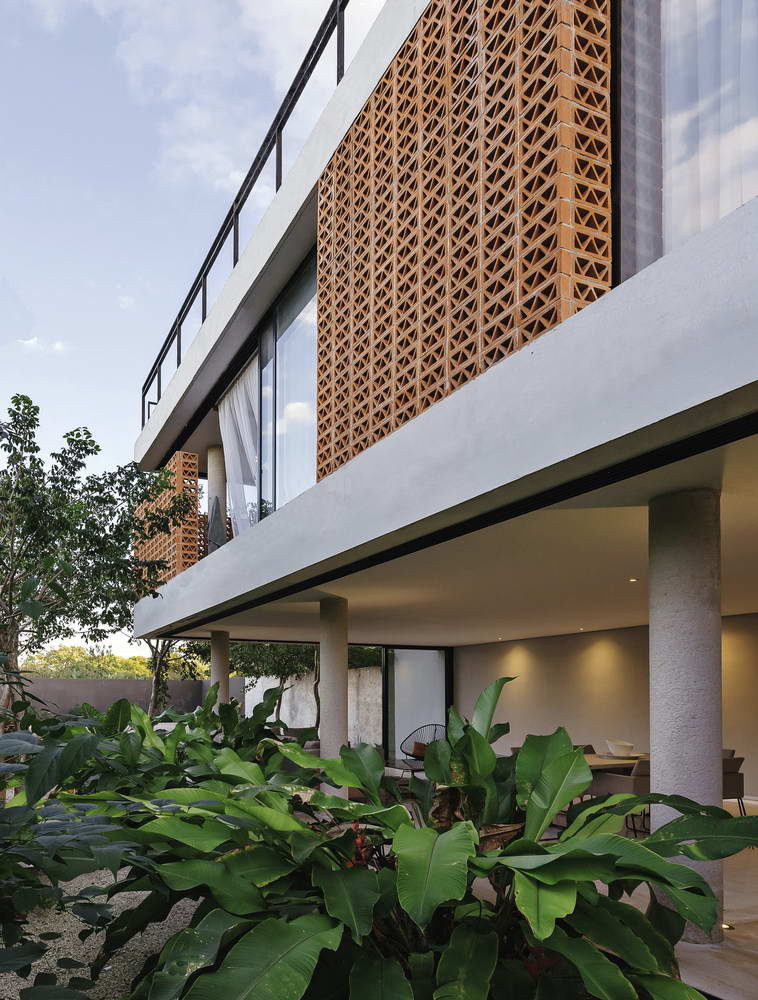#13407. Modern Residence with Perforated Terracotta Facade
The image showcases a modern residential dwelling with an expressive architectural solution. The second-floor facade particularly stands out, clad in a decorative terracotta lattice with a geometric pattern that creates a perforated screen effect. This technique, known as "mashrabiya" in traditional Middle Eastern architecture, is reinterpreted here in a contemporary context, simultaneously providing privacy, filtering sunlight, and serving as a striking visual element.
The lower level of the house is characterized by a minimalist approach with large glazed surfaces that open the interior space to the surrounding environment. Concrete columns support the upper floor, creating a semi-covered terrace. Especially noteworthy is how the architect has integrated abundant tropical vegetation into the design, placing large-leaved plants in close proximity to the living space, which softens the geometric lines of the building.
White plastered surfaces contrast with the warm terracotta shade of the lattice facade, creating a balanced color palette. For those considering similar solutions in facade design for their own homes, perforated screens can be an excellent way to combine functionality (sun protection, privacy) with aesthetic expressiveness. Additionally, the contrast of materials, as shown in this example, can significantly enrich the architectural appearance of a building.
